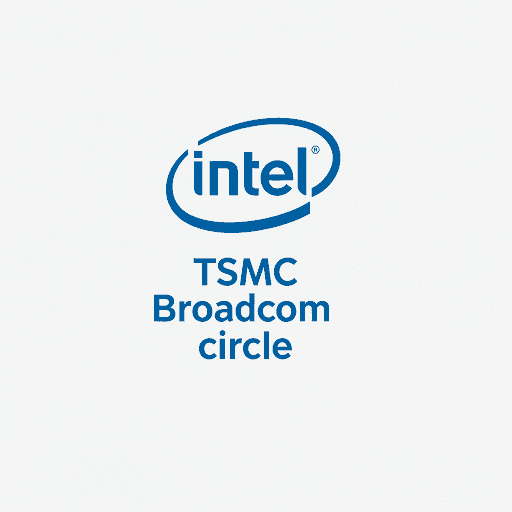Predictive Analytics in IT: The Ultimate Guide to Forecasting the Future of Your Tech

Discover how predictive analytics is revolutionizing IT operations. Explore real-world use cases, best practices, and how it powers proactive IT management.

Predictive Analytics in IT: The Ultimate Guide to Forecasting the Future of Your Tech
Predictive Analytics in IT: How to Stop Fighting Fires and Start Forecasting the Future
Let’s be honest. For a long time, the life of an IT professional has been a lot like that of a firefighter.
A server goes down? Sound the alarm! A critical application slows to a crawl? Grab the hose! A security breach is detected? It's all hands on deck!
This reactive mode is exhausting, expensive, and unsustainable. It leaves your team constantly scrambling, your budget hemorrhaging on emergency fixes, and your business vulnerable to unexpected downtime.
But what if you could see these problems coming? What if you had a crystal ball that warned you about a server failure weeks in advance, flagged a potential security threat before it materialized, or told you exactly when you’d need to upgrade your network capacity?
This isn't science fiction. This is the power of Predictive Analytics in IT, and it’s fundamentally changing how modern organizations manage their technology.
In this deep dive, we’ll unpack everything you need to know about this transformative field. We'll move beyond the jargon to understand what it is, how it works in the real world, and how you can start leveraging it to transform your IT department from a cost center into a strategic powerhouse.
What Exactly is Predictive Analytics? (No, It's Not Magic)
At its core, predictive analytics is a branch of advanced analytics that uses historical data, statistical algorithms, and machine learning (ML) techniques to identify the likelihood of future outcomes.
Think of it like weather forecasting. Meteorologists don't just guess; they analyze vast amounts of historical weather data, current atmospheric pressure, wind patterns, and satellite imagery to model and predict whether you’ll need an umbrella tomorrow.
Predictive analytics does the same for your IT infrastructure. It sifts through the immense, noisy logs generated by your servers, networks, applications, and security systems to find patterns and signals that humans would almost certainly miss.
The Key Ingredients:
Historical Data: This is the fuel. The more high-quality data you have—system logs, performance metrics, trouble tickets, network traffic data—the better your predictions will be.
Statistical Models & Machine Learning: These are the engines. Algorithms ranging from simple linear regression to complex neural networks learn from the historical data to build a model of "normal" behavior.
Deployment & Action: This is the destination. The model is deployed to analyze new, incoming data in real-time. When it detects a pattern that historically led to a specific outcome (e.g., a failure), it triggers an alert or even an automated response.
From Reactive to Proactive: Real-World Use Cases in IT
The theory is great, but where does the rubber meet the road? Let's explore some of the most impactful applications of predictive analytics across different IT domains.
1. Predictive Maintenance for Hardware
This is one of the most classic and valuable use cases. Instead of waiting for a hard drive in your data center to fail (causing costly downtime), predictive analytics can forecast the failure.
How it works: The system continuously monitors key indicators from your hardware—CPU temperature, disk I/O errors, memory usage patterns, SMART attributes for hard drives. ML models learn the specific "signature" of a component that is degrading. A gradual increase in read/write error rates on a specific disk, for instance, might be a strong predictor of imminent failure.
The Business Impact: You can replace the component during a planned maintenance window, with zero unplanned downtime. This saves money, protects revenue, and keeps your IT team sane.
2. IT Asset Management and Capacity Planning
Is your cloud bill skyrocketing? Are you constantly running out of storage? Predictive analytics brings foresight to resource management.
How it works: By analyzing trends in resource consumption (CPU, memory, storage, network bandwidth), the models can forecast future demand. They can predict when you'll need to provision more virtual machines, purchase additional storage arrays, or upgrade your network infrastructure.
The Business Impact: You avoid performance bottlenecks and make informed, cost-effective budgeting decisions. You can move from a "just-in-case" over-provisioning model to a lean, "just-in-time" one, optimizing your cloud and on-premise spending.
3. Enhancing Cybersecurity with Predictive Threat Intelligence
The cyber landscape is a warzone, and predictive analytics is your early-warning radar system.
How it works: Security systems analyze billions of events from firewalls, intrusion detection systems, and endpoints. Predictive models can identify subtle, anomalous behavior that indicates a potential attack, such as a user account accessing data at an unusual time, or a slow, low-level data exfiltration attempt that would otherwise go unnoticed.
The Business Impact: This shifts security from being purely reactive (responding after a breach) to being proactively defensive. You can thwart attacks like ransomware or Advanced Persistent Threats (APTs) before they can cause significant damage.
4. Predicting and Reducing Application Downtime
Application performance issues don't appear out of the blue. There are always warning signs.
How it works: By correlating data from Application Performance Monitoring (APM) tools, infrastructure metrics, and even business data (like a upcoming sales campaign), predictive models can forecast when an application is likely to become slow or unavailable. For example, a gradual increase in database query latency, combined with a rising number of user sessions, might predict a crash during peak load.
The Business Impact: Your DevOps or SRE team can scale resources preemptively or deploy a hotfix before users are affected, ensuring a seamless customer experience and protecting brand reputation.
5. Improving IT Service Desk and User Experience
Even IT support can be supercharged with prediction.
How it works: By analyzing past support tickets, the system can identify common problems that often lead to bigger issues. It can also predict ticket volume based on factors like new software deployments or the start of a new fiscal period.
The Business Impact: The service desk can be proactively staffed, and knowledge base articles can be prepared in advance. In some advanced setups, the system can even push automated solutions to users before they even need to file a ticket—"We noticed your password is about to expire. Click here to reset it now."
Building a Foundation: Best Practices for Implementation
Jumping into predictive analytics without a plan is a recipe for failure. Here’s a pragmatic approach to get started.
Start with a Clear Business Problem: Don't just use predictive analytics because it's trendy. Begin with a specific, high-value problem. "We want to reduce unplanned server downtime by 30% in the next year" is a perfect starting point.
Data Quality is Non-Negotiable: The "garbage in, garbage out" principle has never been more true. Your first and most critical step is to ensure you have clean, consistent, and accessible data. This often means investing in data integration and cleansing tools.
Choose the Right Tools and Talent: The market is flooded with tools, from open-source libraries like Scikit-learn and TensorFlow to enterprise platforms from Splunk, IBM, and Microsoft Azure. Your choice will depend on your in-house expertise. This is a field where skilled professionals are worth their weight in gold.
Start Small and Iterate: Don't try to boil the ocean. Run a pilot project on a single, critical system. Prove the value, learn from the process, and then scale your efforts. A successful small project is far better than a grandiose, failed one.
Focus on Explainability and Actionability: A prediction is useless if no one understands it or knows what to do with it. Ensure your models provide clear, actionable insights. Instead of "Anomaly detected on Server X," an alert should say, "Server X is 95% likely to fail within 72 hours based on rising disk error rates. Recommended action: Schedule replacement."
The world of predictive analytics is built on a foundation of robust software development and data science. To learn professional software development courses such as Python Programming, Full Stack Development, and MERN Stack, visit and enroll today at codercrafter.in. Mastering these skills is your first step towards building the intelligent systems of tomorrow.
Frequently Asked Questions (FAQs)
Q1: Is predictive analytics only for large enterprises with huge IT budgets?
A: Not anymore. While the most sophisticated implementations are in large companies, the cloud has democratized access. Many SaaS (Software-as-a-Service) platforms now offer predictive features as part of their monitoring or security suites, making it accessible for mid-sized businesses to get started without a massive upfront investment.
Q2: How accurate are these predictions?
A: Predictive models aren't about 100% certainty; they're about probability. A model might be 92% confident that a disk will fail. The goal isn't perfection, but to provide a significant advantage over pure guesswork. Even a 70% accurate prediction of a critical failure is immensely valuable.
Q3: Doesn't this lead to IT automation replacing human jobs?
A: It's more about augmentation than replacement. Predictive analytics automates the tedious task of sifting through data and identifying patterns, freeing up IT professionals to focus on higher-value strategic work—architecting solutions, improving processes, and innovating. It elevates the role of IT within the organization.
Q4: What are the biggest challenges in implementing predictive analytics?
A: The top three challenges are consistently:
Data Silos: Getting access to clean data from different, disconnected systems.
Skill Gap: A shortage of data scientists and engineers who understand both the algorithms and the IT domain.
Cultural Resistance: Moving from a reactive "fire-fighting" culture to a proactive, data-driven one can be difficult.
Q5: What's the difference between AI, Machine Learning, and Predictive Analytics?
A: This is a great question. Think of it as a set of nesting dolls:
Artificial Intelligence (AI) is the broadest field—creating machines capable of intelligent behavior.
Machine Learning (ML) is a subset of AI—algorithms that allow computers to learn from data without being explicitly programmed for every task.
Predictive Analytics is a key application of ML, focused specifically on using historical data to forecast future events.
Conclusion: The Future is Proactive
Predictive analytics is no longer a luxury for forward-thinking IT departments; it is rapidly becoming a necessity. In a world where digital performance is directly tied to business success, the ability to anticipate problems, optimize resources, and fortify defenses is the ultimate competitive advantage.
The journey from a reactive firefighter to a proactive forecaster starts with a single step: recognizing the immense value hidden within your own data. It requires a shift in mindset, an investment in skills and tools, and a commitment to a data-driven culture.
The IT landscape of the future will be managed not by those who respond the fastest to emergencies, but by those who have the foresight to prevent them from happening in the first place. The tools and techniques are here. The question is, are you ready to look into the crystal ball?
The skills to build this future are in high demand. If you're inspired to be at the forefront of this technological shift, a strong foundation in coding and development is essential. To learn professional software development courses such as Python Programming, Full Stack Development, and MERN Stack, visit and enroll today at codercrafter.in. Your journey to becoming an architect of the proactive IT world starts here.








